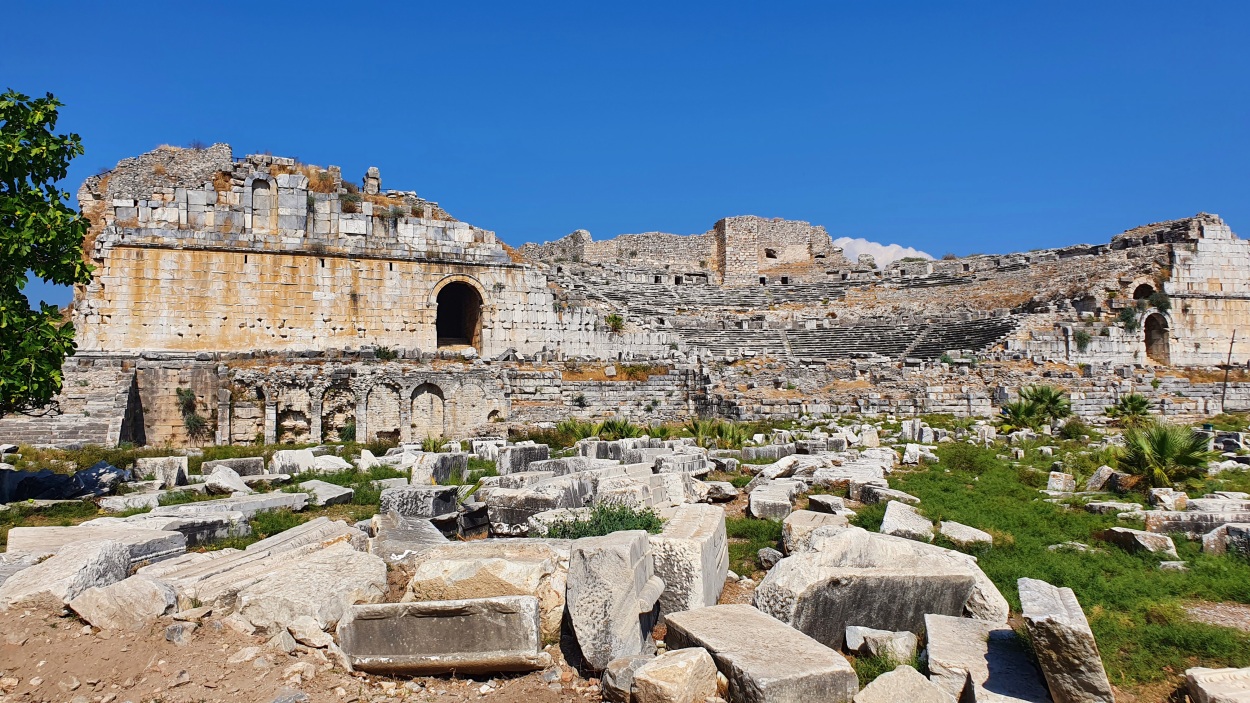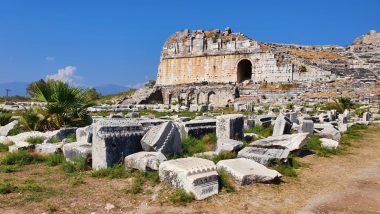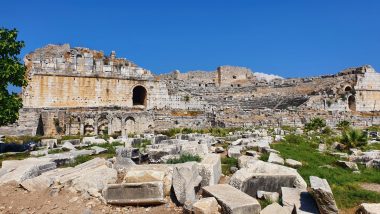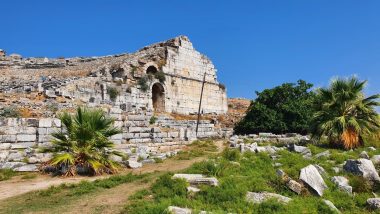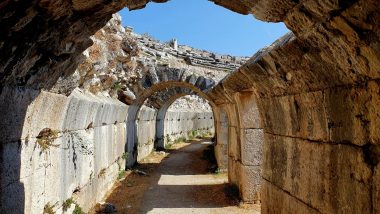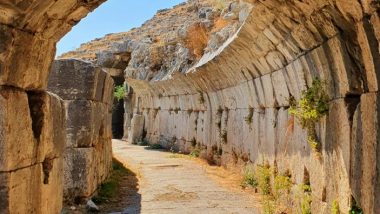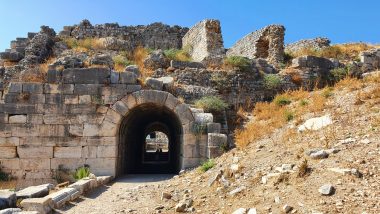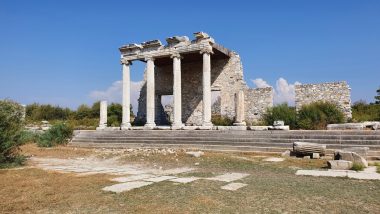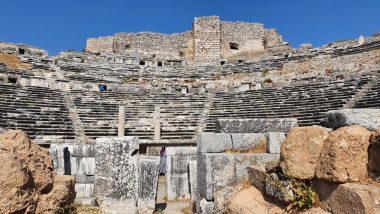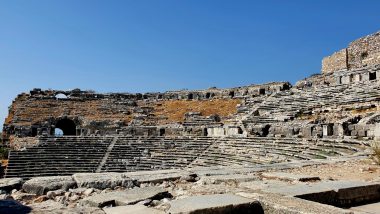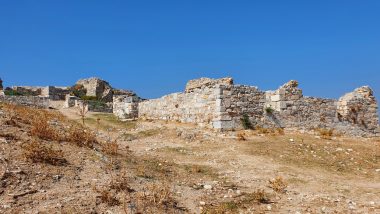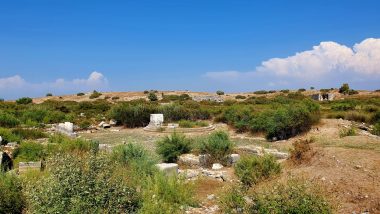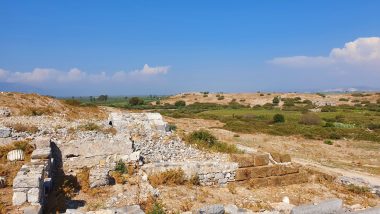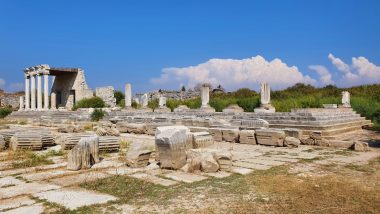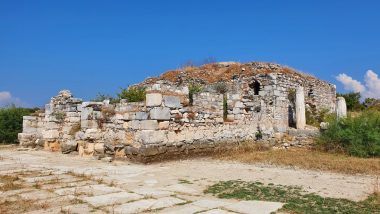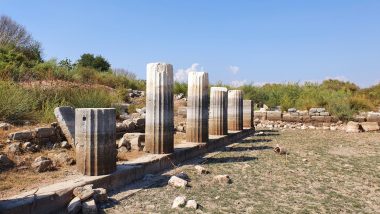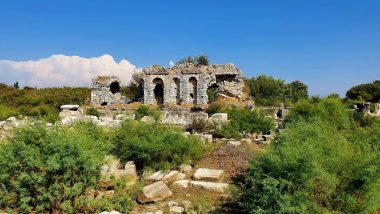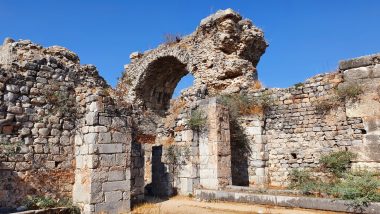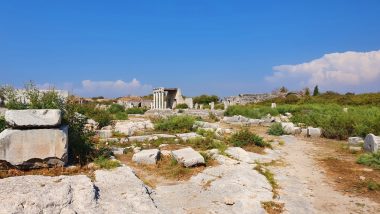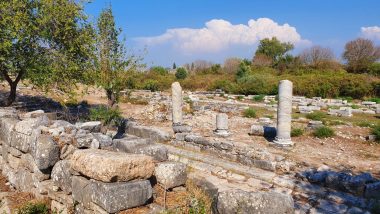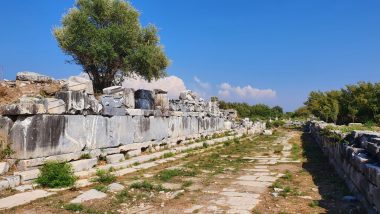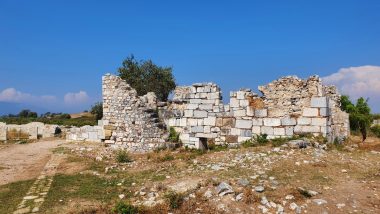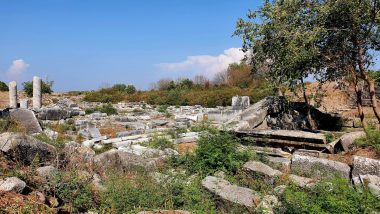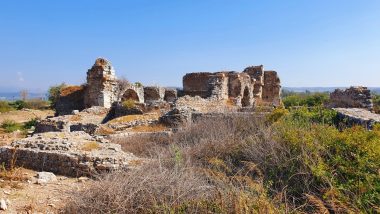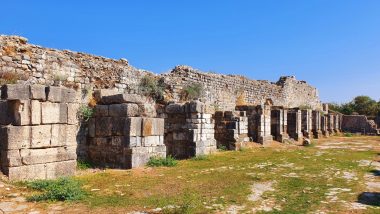Miletus was an ancient Greek city in western Anatolia near the mouth of the Büyükmenderes River. Its mixed Hellenistic-Roman ruins are impressive (🎫 50 TRY). Before 500 BC, Miletus was the greatest Greek city in the east. It was the natural outlet for products from the interior of Anatolia and had a considerable wool trade with Sybaris, in southern Italy. Miletus was important in the founding of the Greek colony of Naukratis in Egypt and founded more than 60 colonies on the shores of the Black Sea. In addition to its commerce and colonization, the city was distinguished for its literary and scientific-philosophical figures, among them Thales, Anaximander, Anaximenes, and Hecataeus. Together with the people of the other two Ionian cities of Caria, Myus and Priene, the Milesians spoke a distinctive Ionian dialect. Like the other coastal cities in the region, Miletus was fought over by Athens and Persia, and finally taken in 334 BC by Alexander the Great, who ushered in the city’s golden age. Rome took over exactly two centuries later, and a small Christian congregation developed after St Paul’s visits at the end of his third missionary journey around AD 57. In Byzantine times Miletus was an archbishopric. Unlike other coastal cities, enough of its port was free from silt build-ups for the Seljuks to use the harbor for maritime trade through the 14th century. The Ottomans abandoned the city when its harbor finally silted up, and the Büyük Menderes River has since pushed Miletus 10km inland.
Parking location – Miletus: 37.530357N 27.273966E (🚻,💦,🅿️ – 15 TRY)


